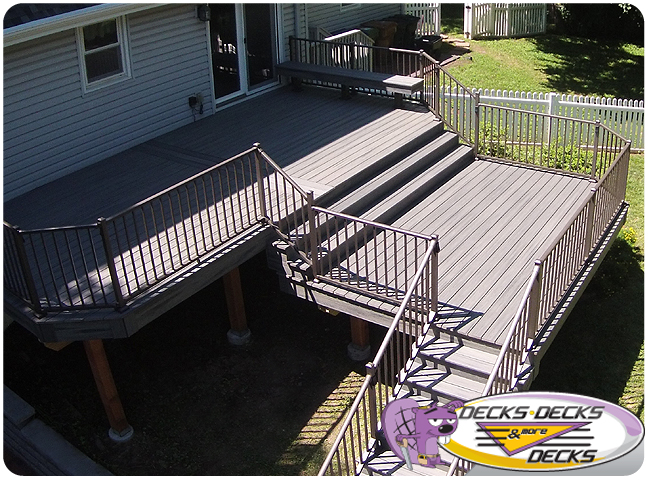8 Things to Know About Replacing a Deck
Replacing an old or worn-out deck can breathe new life into your outdoor space and enhance your home’s value. However, the process involves several important considerations to ensure a successful project. Here are eight key things to know about replacing a deck, from planning and design to installation and maintenance.
1. Assess the Condition of the Existing Deck
Overview: Before starting a replacement project, thoroughly inspect the existing deck to determine the extent of the damage and the necessary changes.
What to Check:
- Structural Integrity: Look for signs of rot, instability, or damage to the framing, joists, and supports.
- Decking Material: Evaluate the condition of the decking boards and railings.
- Foundation: Check for issues with footings and posts.
Why It Matters: Understanding the current condition helps in deciding whether you need a complete replacement or just specific repairs.
2. Set a Realistic Budget When Replacing A Deck
Overview: Establishing a budget is crucial for managing costs and avoiding unexpected expenses. Include all potential costs in your budget planning.
What to Include:
- Materials: Consider the cost of decking materials, railings, and finishes.
- Labor: Factor in costs for professional installation if you’re not doing it yourself.
- Permits and Fees: Account for any necessary permits and inspection fees.
Why It Matters: A well-planned budget helps ensure you stay within your financial limits and avoid surprises during the project.
3. Choose the Right Materials
Overview: Selecting the right materials is essential for both aesthetics and durability. Consider various options to find the best fit for your needs.
Material Options:
- Wood: Traditional and natural, but requires regular maintenance.
- Composite: Low maintenance and durable, often made from recycled materials.
- PVC: Highly durable and resistant to moisture and pests, but can be more expensive.
Why It Matters: The right material affects the deck’s longevity, appearance, and maintenance requirements.
4. Understand Local Building Codes
Overview: Complying with local building codes and regulations is crucial for legal and safety reasons.
What to Check:
- Permits: Obtain the necessary permits before starting construction.
- Building Codes: Ensure your new deck design meets all local regulations regarding load-bearing, railing heights, and other structural aspects.
Why It Matters: Adhering to codes ensures safety, legality, and helps avoid potential fines or issues during inspections.
5. Consider Deck Design and Features
Overview: Designing a deck involves more than just selecting materials. Consider features and layout to maximize functionality and appeal.
Design Elements:
- Layout: Plan the size and shape to fit your space and needs.
- Features: Include elements such as built-in seating, lighting, and planters.
- Accessibility: Ensure the design includes convenient access points and accommodates any special needs.
Why It Matters: A well-designed deck enhances your outdoor living experience and ensures it meets your lifestyle requirements.
6. Hire a Qualified Contractor
Overview: If you’re not handling the replacement yourself, hiring a qualified contractor is crucial for a successful project.
What to Look For:
- Experience: Choose a contractor with a proven track record in deck replacement.
- References: Check references and reviews from past clients.
- Licensing and Insurance: Verify that the contractor has the necessary licenses and insurance.
Why It Matters: A skilled contractor ensures high-quality workmanship, adherence to codes, and a smooth project process.

7. Plan for Maintenance and Upkeep
Overview: Consider the long-term maintenance requirements of your new deck to keep it looking and functioning well.
Maintenance Tips:
- Cleaning: Regularly clean the deck to prevent buildup of dirt and debris.
- Sealing: Apply sealant or stain as needed to protect wood decks from moisture and UV damage.
- Repairs: Address any issues promptly to prevent more extensive damage.
Why It Matters: Proper maintenance extends the life of your deck and keeps it in good condition.
8. Enjoy the Benefits
Overview: Once your new deck is installed, take full advantage of your upgraded outdoor space.
How to Enjoy:
- Entertaining: Host gatherings and enjoy outdoor meals with family and friends.
- Relaxation: Create a cozy retreat for relaxation and leisure.
- Enhancements: Add outdoor furniture, lighting, and décor to personalize your space.
Why It Matters: A well-designed and properly maintained deck enhances your outdoor living experience and adds value to your home.
Conclusion
Replacing a deck is a significant project that requires careful planning and consideration. By assessing the condition of your existing deck, setting a realistic budget, choosing the right materials, and adhering to local codes, you can ensure a successful replacement. Hiring a qualified contractor, planning for maintenance, and enjoying your new deck will help you maximize the benefits of your investment. With the right approach, your new deck will provide years of enjoyment and enhance your outdoor living space.
Check Out This Blog!

